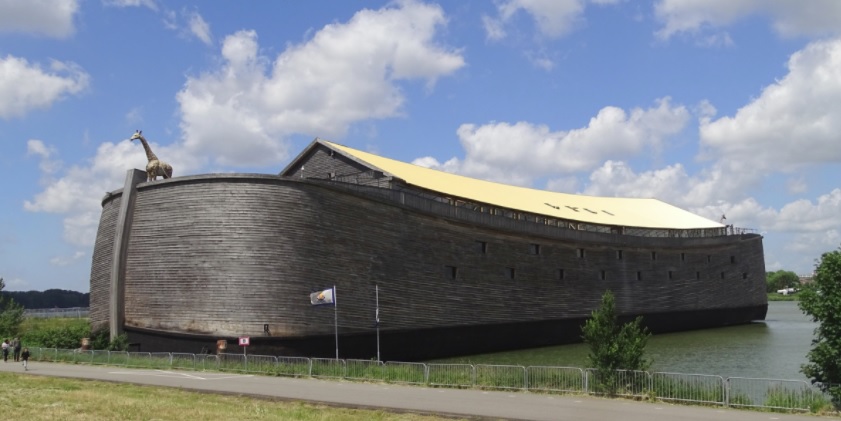By (imperfect) living-pterosaur expert Jonathan D. Whitcomb
Late on the night of January 16, 2018, (9:00-11:45 p.m. Pacific time) I, Jonathan Whitcomb, was interviewed by Dave Scott on Spaced Out Radio (online radio broadcasting from British Columbia, Canada). One of my associates phoned me, the next day, unhappy with my neglect: For one thing, I had said nothing about the importance of the Ark of Genesis in living-pterosaur investigations. I am sorry for my imperfections, and I now plan to correct that neglect with the following steps, and possibly with more:
- I’ll be prepared to mention the Ark in future talk-show interviews
- I’ll mention the Biblical perspective more in my writings, incl. on Flood-of-Genesis (dot-com)
- I’ll write at least one book emphasizing the Ark’s importance regarding living-pterosaurs
At the beginning of this interview on Spaced Out Radio, Mr. Scott referred to me as a man of faith. I hope that I, imperfect as I am, will live up to that. Near the beginning of the discussion, I mentioned my Evolutionary Boundary simulation many years ago, although I may not have mentioned the name of it. To be brief, it showed me that Darwin’s concept of survival of the fittest actually makes his concept of evolution impossible: Small simple forms of life cannot evolve into larger complex forms of life BECAUSE of natural selection.
.
Replica of the Ark of Noah, in the Netherlands
Biblical Ark and Modern Pterosaurs
Let’s keep this short and simple. The primary foundation for belief in scriptures, and belief in the literal ark of Noah, is in faith. That does not mean blind faith, believing without any reason to believe, but it can mean taking one or two steps onto the path ahead, even when the light does not yet quite reach that far.
The Ark we read about in Genesis was constructed to protect basic forms of life that would not have survived without protection. Birds and pterosaurs could have flown above the flood waters for a time, of course, but they would not generally have been able to survive long without a place to rest. I believe a number of species of pterosaurs were kept on the Ark, as well as a number of dinosaurs.
Why do I believe in modern-day living pterosaurs? Because many persons, from many cultures and backgrounds and from many areas of the planet, have seen those flying creatures.
(The photo shown above is not to be confused with the Ark replica in Kentucky.)
###
.
Spaced-Out Radio interview of Jonathan Whitcomb
(audio) Host Dave Scott and guest (JW) discuss living pterosaurs
.
Ark Encounter features a full-size Noah’s Ark, built according to the dimensions given in the Bible. Spanning 510 feet long, 85 feet wide, and 51 feet high, this modern engineering marvel amazes visitors . . .
.
Where Living Pterosaurs Have Been Reported
- Africa
- Australia
- Canada
- England
- Papua New Guinea
- United States of America
- and many other countries worldwide
.
Reply to a Newspaper Article in North Carolina
The News & Observer published an article, earlier this week, about a sighting by Cynthia Lee and about my ideas on non-extinct “pterodactyls,” including pterosaur sightings in Raleigh, North Carolina.
.
They only appear a few times each year, but they always come back. Sometimes a ball of light seems to split into two, with a separation and eventual reunion [Marfa Lights]
.
Asked how Johan’s Ark compares with the Ark Encounter project planned for Kentucky, Zovath said that while both arks are built to biblical measurements, the Ark Encounter project addresses the shipbuilding processes Noah likely used. Huibers utilized steel barges welded together and then covered with wood, and he also modified the design to accommodate a more “free-flowing” crowd.
.
Living Pterosaurs – a proclamation
The second part of PLP goes into more details, regarding encounters with apparent extant pterosaurs, compared with DLP, and there is limited overlapping of what sightings are covered. Here in PLP are more of the earlier reports that I, Jonathan Whitcomb, received in my earlier years of my investigation.




One Reply to “Online-Radio Interview With Dave Scott (Spaced Out Radio)”
Comments are closed.